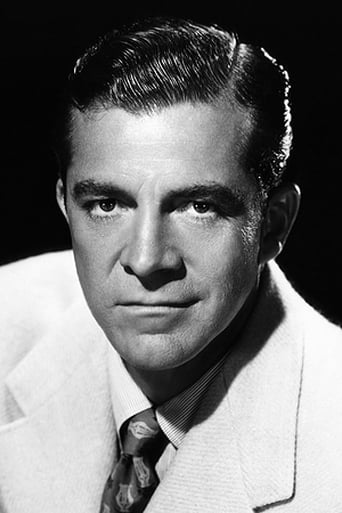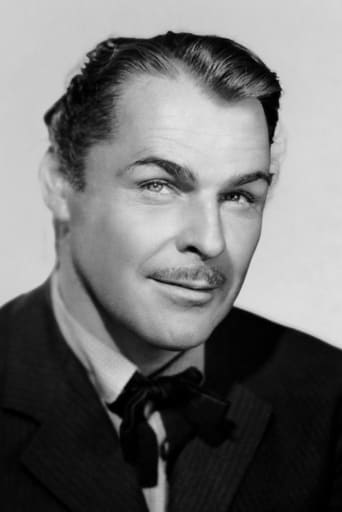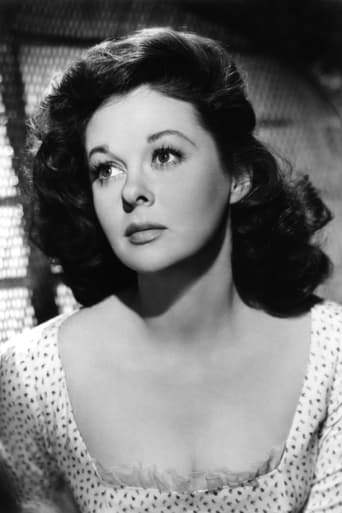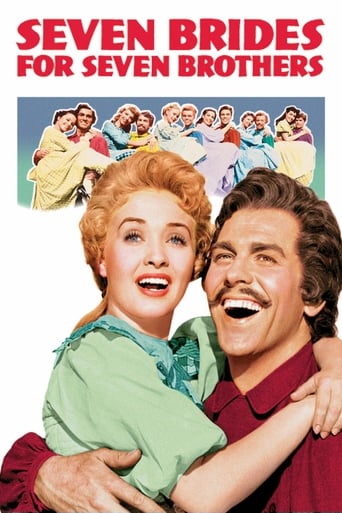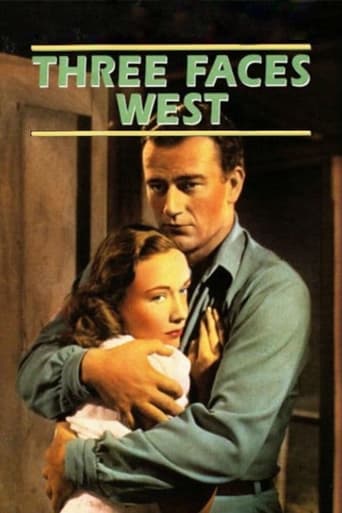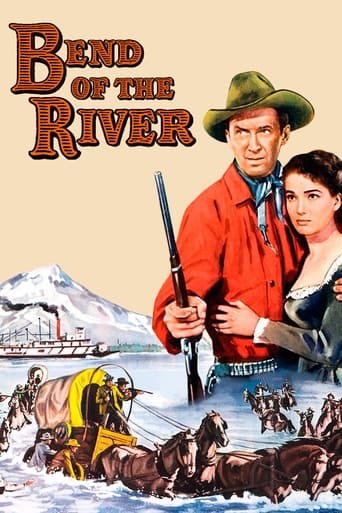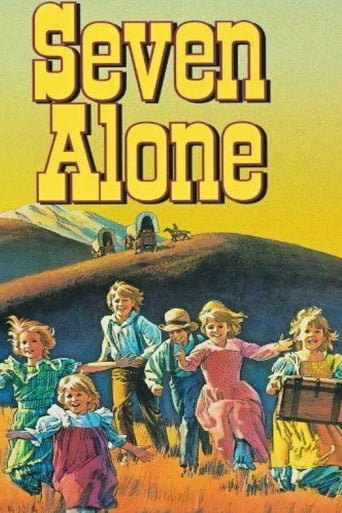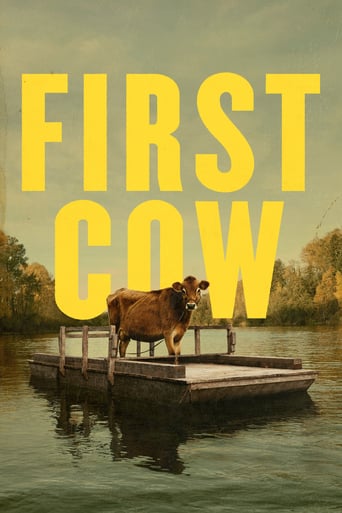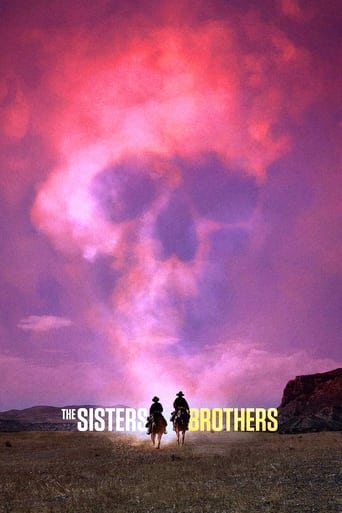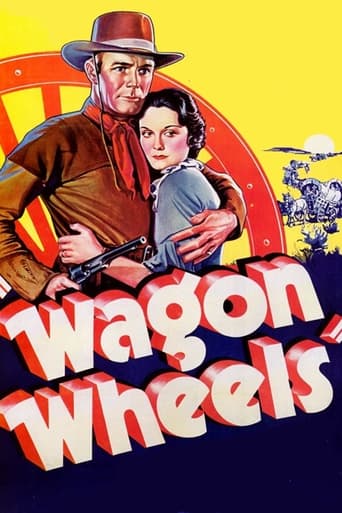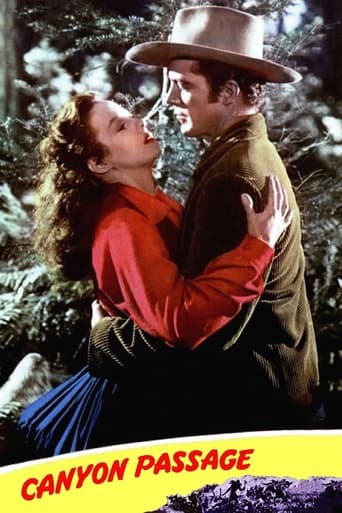
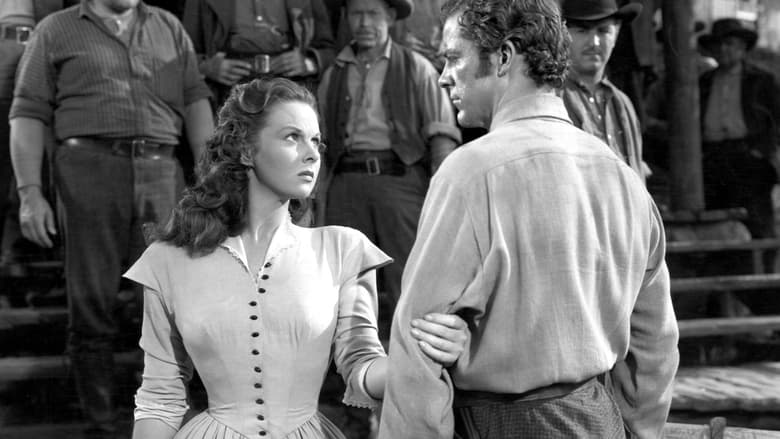
Canyon Passage (1946)
In 1850s Oregon, a businessman is torn between his love of two very different women and his loyalty to a compulsive gambler friend who goes over the line.
Watch Trailer
Cast


Similar titles
Reviews
I loved Susan Hayward in Dana Andrews in My Foolish Heart, so when I learned they had made another film together, I was very excited to see it. Unfortunately, Canyon Passage was so boring I ended up doing a crossword at the same time. First off, Susan is engaged to Dana's friend Brian Donlevy, and Dana has a burgeoning relationship with Patricia Roc. While the two leads are friendly and comfortable together, it's clear there's to be no hanky-panky going on while they're both involved with other people. Where's the fun in that? The film takes place in 1850s Oregon, but it's not a typical western. Yes, there are barroom brawls, hoedowns, and a general fear and dislike of Indians. But it doesn't feel like a western because the scenery is so different. Gone are the dusty dirt roads and tiny town with the one general goods store across from the one saloon. In its place are lush greens, blues, and browns in the surrounding mountains, trees, and valleys. In this aspect, it's great to watch, but it's far from my favorite western. For true fans of this genre, you could do worse than to rent this one, but it has the tendency to feel a little sluggish.
Jacques Tourneur directed a couple of real winners in the productions of Val Lewton at RKO a few years before this, and then "Out of the Past", a beacon of noir. His career decline in the 50s and he wound up churning out junk on television.This film, made when he was in his early forties, has been criticized because it doesn't seem as skillfully done as such low-budget masterpieces as "Cat People." But it's still a distinctive Western.First of all, Tourneur didn't simply throw away everything he'd learned at RKO. In those psychological horror stories, most of the menace is implied or off screen. He brought that particular trope with him. The majority of significant murders take place off screen. There is a climactic Indian attack but no shoot outs. Nobody is faster with a gun than anyone else. The result is less action and more of an emphasis on the dynamics of personality.Second, it's true that there is little of the Angst here that there was in the horror films but Tourneur has handled the tension well and he's trying to do something here that he didn't try in any of his other movies. He's captured a community. The stars are only cogs in a much more complicated social machine. Jacksonville isn't John Ford's kind of community. The crowd may build a house with joint action but they can turn vicious and judgmental and punitive at a moment's notice.Jacksonville is a peculiar community in some ways. Everyone knows everyone else's name and habits. And, as benign and affable as they usually are, they're intent on shaming Dana Andrews into a fist fight with Ward Bond -- in what is probably Bond's best performance. Of course the same applies to Ford's Irish community in "The Quiet Man." But this isn't a comic fight between Andrews and Bond. It's brief but extremely brutal for 1946. And it's unconventional in other ways. Usually in Westerns, the slug fest begins with fists and when the villain realizes he's outmatched he picks up a piece of furniture or an ax and tries to subdue the hero. In this instance, Bond gets the first punch in. Then Andrews gets to his feet, picks up a chair at once, and slams it down on Bond's back. The chair doesn't break into a thousand pieces either. The bloody fight isn't the least amusing and it wouldn't be equaled until "Shane" in 1952.The principle is Dana Andrews as the level-headed businessman who experiences role conflict. He's a friend to his weak partner, Brian Donlevy, but he abhors his dishonesty. He's had a long-time girl friend, Patricia Roc, but is increasingly attracted to Donlevy's fiancée, Susan Hayward. Hoagy Carmichael is around to add some unnecessary numbers to the musical score. Nobody's but Bond's performance stands out. The Indians are tolerant of whites -- up to a point -- and then they morph into the Goddess of Rhamnous.This is by no means the best Western ever made. (It could be argued that it's not a Western at all.) But it's tidy and deliberate; the dialog by Ernest Pascal has some surprises tucked away in it. "Censure on your lips; approval in your eyes."
This film opens in Portland, Oregon in the 1850s; businessman Logan Stewart rides into town and withdraws some of his gold from storage; he runs a freight business and wants to expand; ultimately he hopes to bring the stage coach to the growing town. Somebody obviously knows he has gold on him as he is attacked in his room during the night; the assailant gets away but Logan has an idea who it could be; Honey Bragg; a man Logan suspects murdered a couple of miners a few days before. The next morning he leaves town with Lucy, the fiancée of his friend George. They are heading to Jacksonville where George runs the gold store... in effect the town bank. For some time after this nothing much happens; we see the townsfolk coming together to build a house for a couple of newly wed farmers; there is a tense but peaceful meeting with the local Indians and we learn that George likes to gamble rather more than he should. The action kicks off later when a man is murdered shortly after returning to town; George is the chief suspect as it is believed that he had been helping himself to peoples gold. Logan points out that the evidence is circumstantial and their 'trial' isn't legal but it is clear that they intend to hang George at nightfall; when he sees a chance Logan helps his friend escape. Bragg meanwhile has killed again; this time an Indian woman... the rest of the tribe are now on the warpath and many people will die before peace returns to Jacksonville.Given its age I had expected this film to be in black and white but it was in glorious Technicolor... just what the glorious Oregon setting required! The opening half of the film may have been fairly action free but it did a fine job of introducing us to the characters and giving us a glimpse in to the lives of people living far away from 'civilisation'... they may have been in the United States but if something needed doing they had to do it themselves; that included defending themselves when things got dangerous. By the time the action started I had grown to care about the characters. The action when it came was more shocking than I'd expected; among those we see killed are women and children we have been introduced to earlier on. The characters aren't all what one would expect in a western of this era; this is especially true of George who puts his gambling addiction ahead of his fiancée and is almost certainly guilty of the murder he was accused of. The acting was solid with Dana Andrews doing a good job as Logan and Brian Donlevy being equally good as his friend George. Director Jacques Tourneur did a fine job; perhaps it is because he was French rather than American that this feels so different from other westerns of that era I've seen. Overall I'd certainly recommend this to fans of the genre.
Prior to 1947 and Smash-Up, the film that set the pace for Susan Hayward to play emotionally unbalanced women, her earlier films such as Reap the Wild Wind (1942) and I Married A Witch (1944) were simply awful. This film falls in that category as well.Despite the beautiful scenery, the film for the most part is primarily dull. Let's not get into the trap of the hard pioneer life because even the pioneers would have been annoyed with this film.I knew that it was too good to be true when Brian Donlevy was playing a nice business person. I just knew that there had to be murder in his heart. Furthermore, Ward Bond looked so big and heavier in his role as the heavy.The story really doesn't get started until the murders and the Indian uprising. The beginning is very slow moving.In the same year that Andrews gave a memorable performance in "The Best Years of Our Lives," he was given very poor writing material to work with here. Hayward is extremely wooden in the role of Lucy. She just seemed to follow that way in all of her previous performances. Patricia Roc, in the role of Caroline, is the real loser in this film. She loses everything, but vows to remain far away from the town after the uprising. No wonder little was ever heard from her again.A vintage film to forget,please do.


